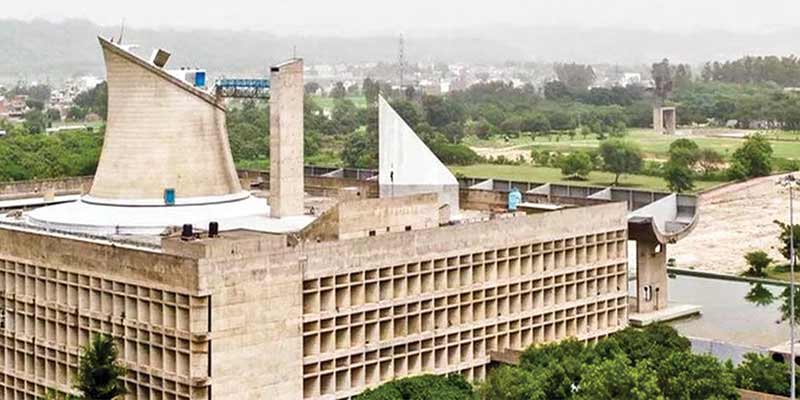- India
- May 10
Explainer - S.R Bommai case & floor test
• The Congress, the Jannayak Janata Party (JJP) and the Indian National Lok Dal (INLD) have approached Governor Bandaru Dattatreya, stepping up their efforts to topple Haryana’s BJP government after it was reduced to a minority in the state Assembly.
• Chief Minister Nayab Singh Saini maintained that his government is not in trouble.
• In separate letters to the Governor, the JJP and the INLD have sought a floor test in the Assembly.
• The House at present has an effective strength of 88 with Karnal and Rania assembly seats being vacant. The BJP has 40 MLAs, the Congress 30 and the JJP 10 in the House. INLD and Haryana Lokhit Party have one member each, while the total number of Independent MLAs are six.
• The BJP government appears safe for now. Under the rules, a no-trust motion against a government can’t be moved within six months of the previous one. In this case, the BJP government in Haryana had faced the no-confidence motion in February.
• Later, after Nayab Saini took oath as Chief Minister, his government won the trust vote on March 13.
• The Assembly elections are due in Haryana in October this year.
What is a floor test?
• A floor test is a legislative procedure through which an incumbent government that is suspected to have lost majority is required to prove it still retains the confidence of the House.
• The Chief Minister has to move a vote of confidence and win a majority among those present and voting. If the confidence motion fails to pass, the Chief Minister has to resign.
• The purpose of holding a floor test in the Legislative Assembly is to enable the elected representatives to determine whether the Council of Ministers commands the confidence of the House.
• It is a well-recognised principle that a floor test within the shortest possible time is the appropriate measure where any doubt arises over whether an incumbent government continues to enjoy the support of the majority in the Legislative Assembly.
• Only a floor test in the Assembly will decide if a government can continue or not, according to a precedent set by the Supreme Court’s judgment in the S.R. Bommai vs Union of India case of 1994.
Power of Governor to summon the House
• The Governor constitutes an integral part of a State Legislature. The executive power of the State is vested in the Governor.
• Article 163 requires the Governor to exercise their legislative and executive power on the aid and advice of the Council of Ministers.
• Article 163(2) empowers the Governor to exercise their discretionary powers when required by or under the Constitution.
• Article 174(1) provides that the Governor shall from time to time summon the House to meet at such time and place as they think fit. However, the duration between the end of a session and the commencement of the next session shall not exceed six months.
• Article 174(2) entrusts the Governor with the authority to
i) Prorogue the House.
ii) Dissolve the Legislative Assembly.
• Article 175(1) empowers the Governor to address the House.
• Article 175(2) permits the Governor to send messages to the House whether with respect to a pending Bill or otherwise.
What is the S.R. Bommai case?
• Supreme Court’s judgment in the S.R. Bommai vs Union of India case of 1994 is often referred to regarding floor tests.
• S.R. Bommai was the chief minister of the Janata Dal government in Karnataka. His government was dismissed on April 21, 1989 under Article 356 of the Constitution and President’s rule was imposed.
• The dismissal was on the grounds that the Bommai government had lost majority following large-scale defections. Governor P. Venkatasubbaiah refused to give Bommai an opportunity to test his majority in the Assembly despite the latter presenting him with a copy of the resolution passed by the Janata Dal Legislature Party.
• The governor sent another report to the President reiterating that the Chief Minister had lost the confidence of the majority of the House and recommended action under Article 356(1). Accordingly, on April 21, 1989, the President issued a proclamation, dismissed the state government, and dissolved the Assembly.
• Bommai went to the Supreme Court against the governor’s decision to recommend President’s rule.
• In a landmark verdict, the Supreme Court put an end to the arbitrary dismissal of state governments under Article 356 by spelling out restrictions. “The power conferred by Article 356 is a conditioned power; it is not an absolute power to be exercised by the discretion of the President,” it said.
• The verdict said the President should exercise the power only after his proclamation (imposing his/her rule) is approved by both Houses of Parliament. Till then, the court said, the President can only suspend the Legislative Assembly by suspending the provisions of Constitution relating to the Legislative Assembly.
• The case became one of the most cited whenever hung Assemblies were returned and parties scrambled to form a government.
Manorama Yearbook app is now available on Google Play Store and iOS App Store

